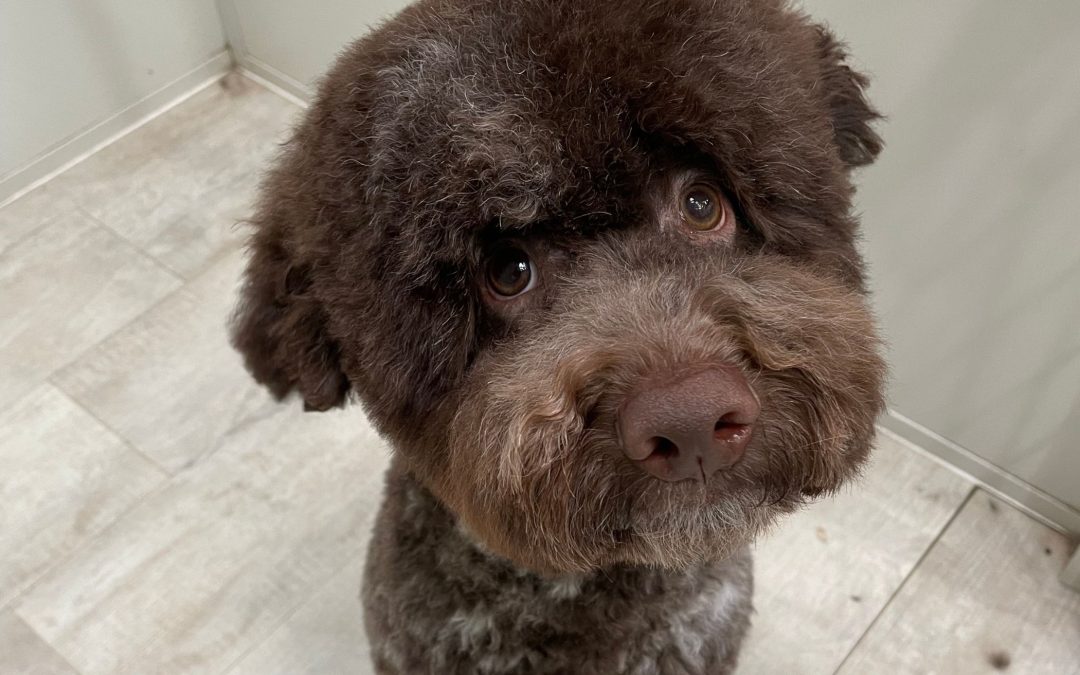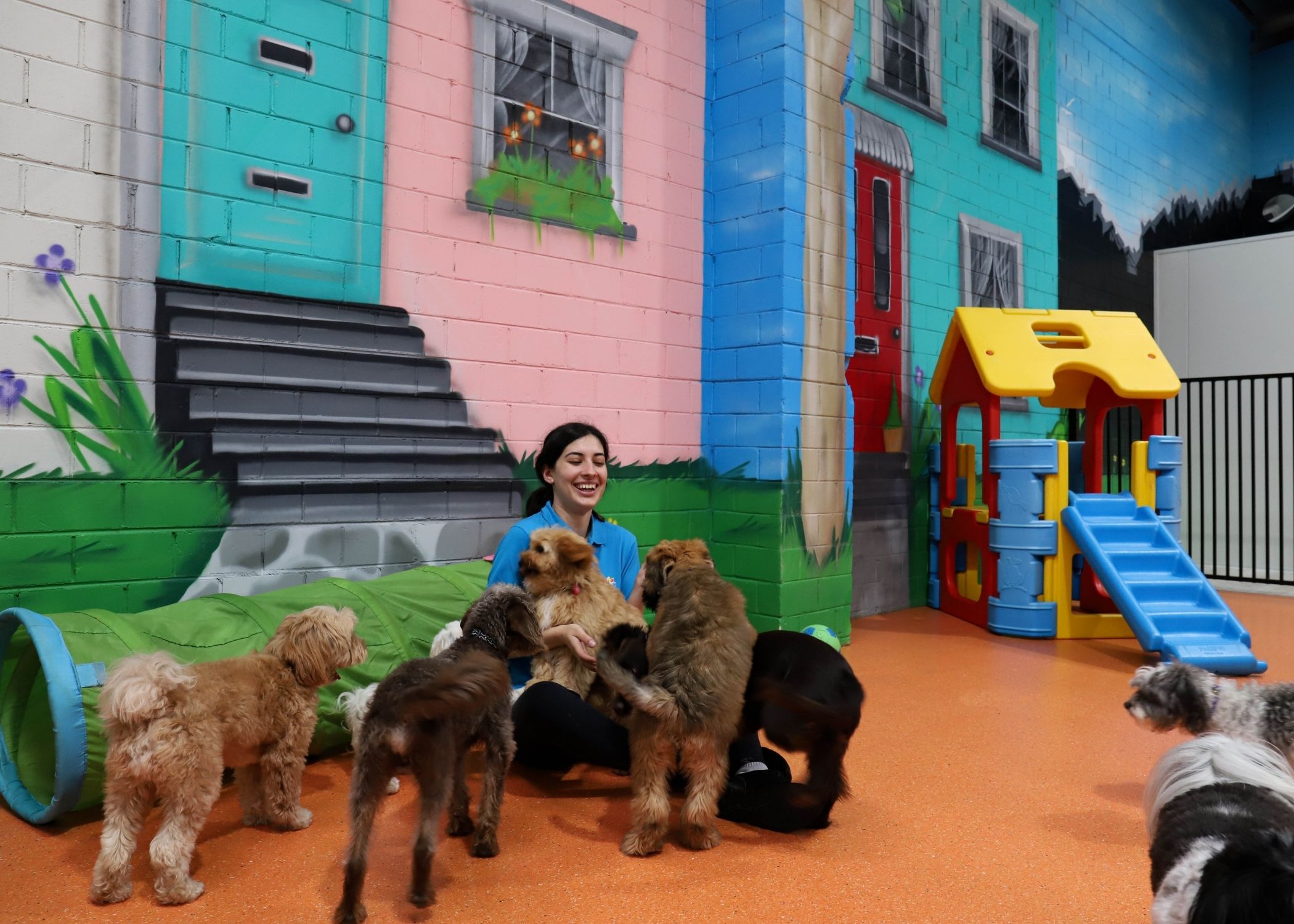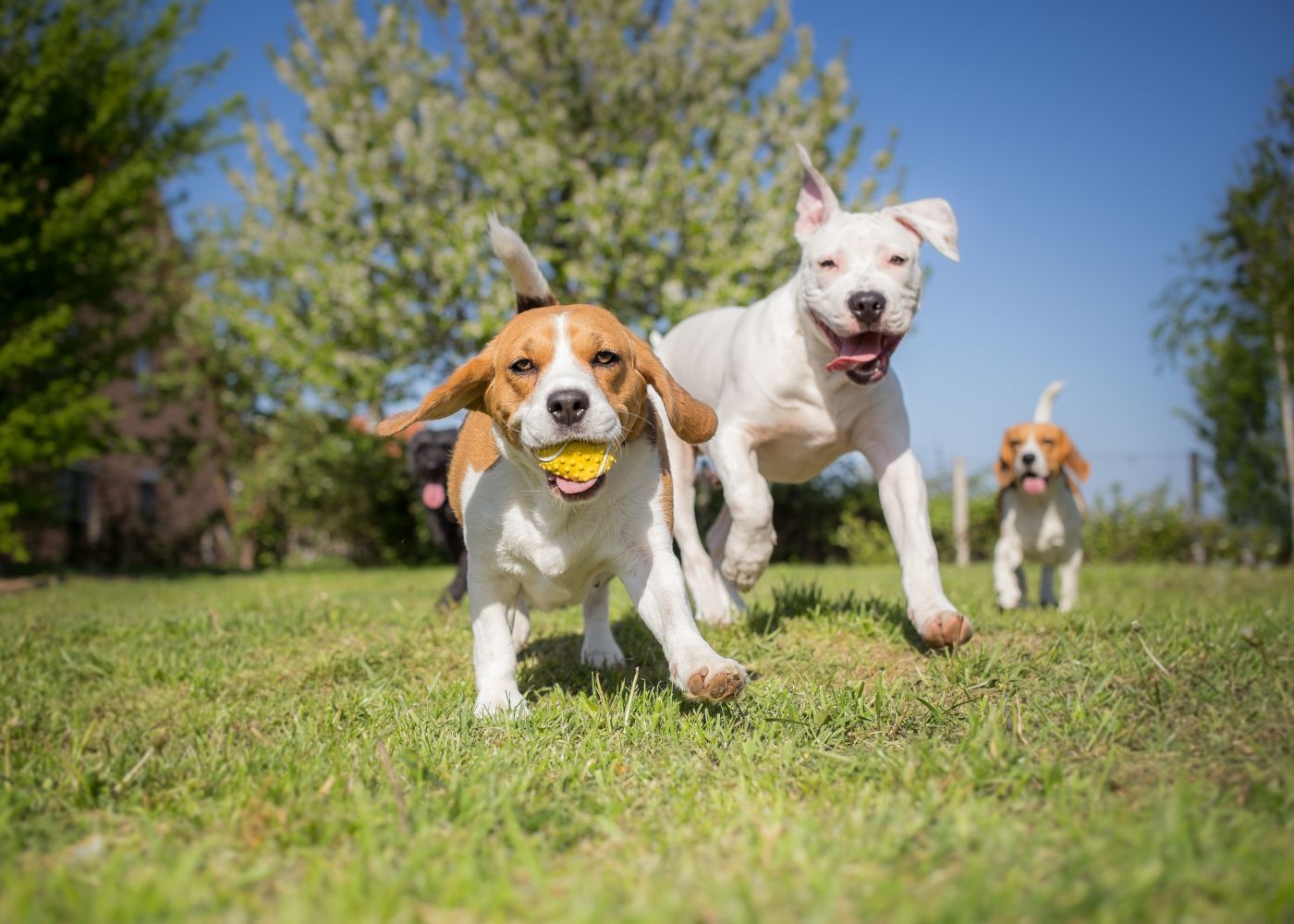No one knows your pup better than you. You know when they’re guilty, happy, scared and hungry – but have you ever thought about why you know them so well? What are the signals they’re giving off to show you all these emotions? We know they’re not talking to us, so what exactly are they doing?
In this article, we’re going to go through the importance of understanding dog body language so that you can get to know your pooch even better. It’s an essential part of being a doggie owner and can really help to deepen the bond between you and your furry best friend.
How Do Dogs Communicate with Us?
Did you know that 55% of a human face-to-face conversation is body language? That means you’re giving off way more through your actions, posture and facial expressions than you are through your words.
Which is why it’s easy for us to communicate with pups too. For example, when you say ‘well done’ to your pooch for learning a new trick, do you simply say the words in a monotone voice and expect them to understand? Or do you smile, put your hands on your knees and show them what you mean by ‘well done’ with lots of physical praise? We speak to dogs through body language, treats and hugs all the time. And that’s how they communicate with us too.
Our canine companions primarily communicate through facial expressions, behaviour, body movements and their voice (howling with excitement as the fire engine goes by, for example). They can express to us if they’re bored, having fun or if it’s time for a rest – all without really telling us.
Understanding Dog Body Language – Signs to Look Out For
Every dog is different and not all pups react in the same way to different stimuli or situations. It may be really easy to read some dogs’ faces and others may do something unusual when they’re feeling a particular emotion. When you drop your pup off at doggie daycare for the first time, it’s important to mention any unusual behavioural characteristics your dog has to our staff. They’re highly experienced in all things canine body language but, until they get to know your pooch fully, they may need to know any specific quirks.
Tail Wagging – Always the Sign of a Happy Pooch?
We all know that dogs wag their tails when they’re happy. Maybe you’ve just reached for the treat jar, picked up the lead or returned home from work – you’re sure to be greeted with a ferociously wagging tail. But, how your pup holds its tail can signify many other emotions.
Held low, between their legs: Some dog breeds, such as Greyhounds, naturally have a low-hanging tail that’s held between their legs. But other breeds often hold their tails low when they’re anxious or scared.
Speed of wagging: If a dog is slowly wagging their tail, it may mean that they’re uncertain or respecting another pooch. For example, it’s not unusual for pups to slowly wag their tail if they’re a little nervous about entering daycare or the pup park for the first time. Until they’ve worked things out and gotten used to it, they may be a bit reserved.
Raised tail: Some dog breeds have tails that fall parallel to the ground and others even have ringed tails that curl over their backs (like Shiba Inus). But, when a dog raises their tail up significantly, this can be a sign of confidence and authority. It shows that they’re alert and ready for action (it’s a common trait in hunting pups).
Whilst tail movements can tell us a lot about how pups are feeling, it’s important they’re accompanied by the right body posture and facial expressions too. A dog that’s keenly wagging their tail isn’t always happy. They may be exceptionally nervous, and you can usually see this on their face.
Ear Position
As well as tails, you can tell a lot about what your doggie is feeling based on their ears.
Erect and facing forward: When a pup’s ears are standing upright and facing you, it often suggests they’re happy, interested and engaged. You can usually see this position when they’re waiting for the ball to be thrown.
Pulled back ears: If your pooch has pulled-back ears (turned to either side), it’s a good indication that they’re happy and friendly. Of course, still approach dogs you don’t know with caution, even if their ears are pulled back.
Laid tightly on their heads: When your pup puts their ears flat on their head, it can be a sign that they’re scared or feeling unsure.
All About the Face
When it comes to understanding dog body language, this is possibly the easiest one to read – especially if they’re your pup. But even so, there are a couple of easy signals your dog does to show you how they’re feeling.
Narrow eyes: When your pooch squints, it can often signify fear, aggression or intimidation.
Relaxed jowl and mouth: When your pup’s facial features are relaxed, it can mean they’re happy, content and comfortable.
Sleeping on their back: Dogs sleep in many different positions (even on your feet) but sleeping on their back can show how comfortable they are. They’re exposing their ‘vulnerable’ organs, so clearly feel comfortable around you. Sleeping habits are a really interesting part of dog behaviour and body language.
Showing teeth: As you can imagine, showing teeth is often a sign of aggression and intimidation.
Body Position
You can know instantly from a dog’s posture if they’re happy, sad or aggressive. It’s important for pup parents to learn to recognise this behaviour, not only for their own pooch but for when they’re around others too.
Bowing: Pups bow (put their forelegs and head down slightly) when they’re happy and ready to play. This posture is often accompanied by a wagging tail!
Rigid body: Stiff legs and a rigid body can be an indication of aggression or fear.
Relaxed body: This usually means your pup is confident, comfortable and having a good time.
Showing their tummy: By rolling over, dogs are submitting to another pup or human. This can be normal doggie play behaviour or it can indicate fear or anxiety.
Voice
Even though they can’t specifically tell you how much they enjoyed that game of fetch, dogs can definitely use their voices to communicate.
Howling: Dogs howl when they’re lonely or distressed (unless they’re a Husky that just likes the attention).
Whining: This isn’t always a sign of your pooch being sad, it can also mean they’re excited.
Growling: This is a very intense sound and is often a warning sign to other dogs around them.
Why Is Understanding Canine Body Language Important at Doggie Daycare?
At The Dog Dazzlers, all our handlers are experts in doggie behaviour and can spot the signs early on if a pup isn’t feeling their best (and when they are)! When your pup is in our care, it’s our responsibility to look after all the pack. That’s also why we carry out thorough initial daycare assessments, so we can watch how all the dogs interact with each other and make sure that a new dog fits in well.
By understanding dog body language, we’re able to de-escalate conflicts (usually arising over a favourite ball) and intervene when necessary. It’s also really fun for all our handlers to get to know each dog and their unique signs to show they’re happy or feeling a bit overwhelmed. It helps us to create a lasting and meaningful bond which can help a lot with training and obedience sessions.
We think it’s so important that anyone who works with pups understands the clear communication signals they give us. It helps us to keep them safe and make our doggie daycare more enjoyable for everyone.
If you’re interested in enrolling your pup for an initial assessment, contact the team at The Dog Dazzlers. Your dog will love making new furry friends and bonding with their new human ones too.



